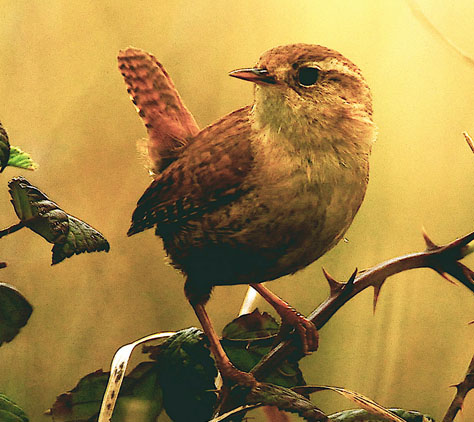
BIRDS OF THE SULGRAVE AREA
(Home)
WREN (Troglodytes troglodytes)

The wren is almost the smallest of our native birds. Its Latin name (“cave-dweller”) is slightly misleading – it doesn’t usually live in caves – but it does suggest its common habitat, namely hedge-bottoms, banks, walls, wood-piles, nooks and crannies, where it feeds on insects and spiders. It is common throughout this country, and is even found on the isles of St Kilda – the most remote part of the British Isles.
It has the reputation of being furtive and shy, and certainly seems to go about its business with complete disregard of other creatures, including man. Its low flight is buzzing and direct. With its short, often cocked-up tail and its surprisingly loud bursts of song, it gives an impression of perky cheerfulness. Possibly uniquely among British birds, it may sing on any day of the year.
In the breeding season, the male bird builds several nests of small twigs, and the female then makes her choice, lining it with feathers and moss. The nest may be in any odd place; recorded sites include a scarecrow’s pocket, the floral cross on a church pulpit and even inside a human skull.
Such a small bird is very vulnerable in harsh winters, and sometimes there may be a dramatic fall in population. The wren’s strategy against the cold is to huddle together, sometimes in large groups of 30, 40 or more, in old birds’ nests or nest-boxes. Fortunately, it produces two broods, each of up to 10 young, and so can quickly make good any decline in numbers.
Photo: John Sheppard. Text: George Metcalfe.
See Bird Archive for other birds in this series.